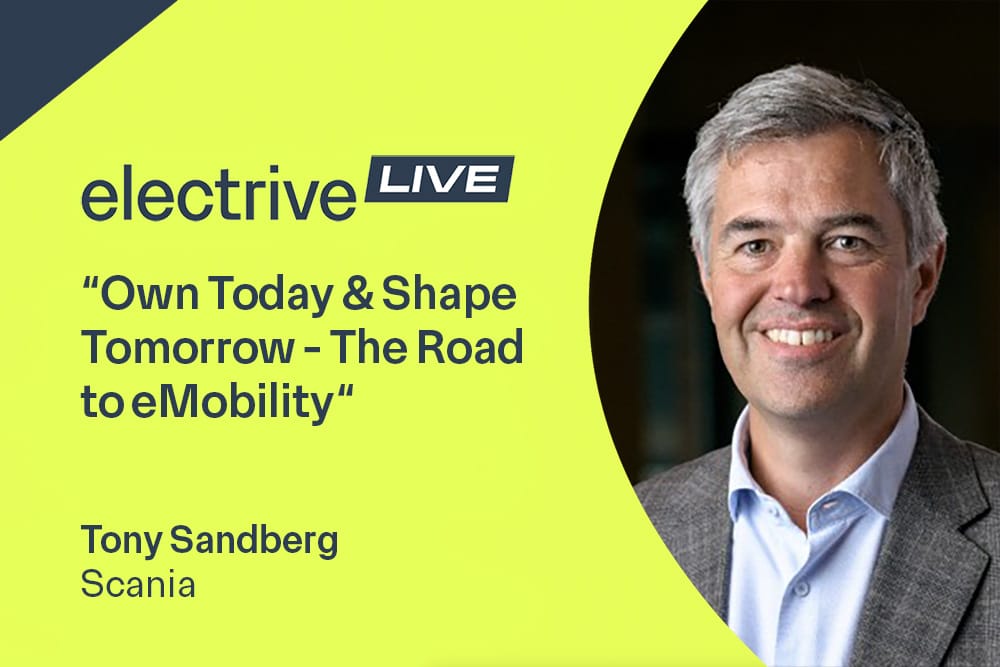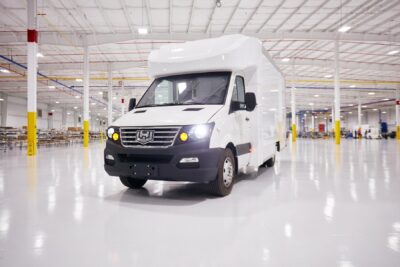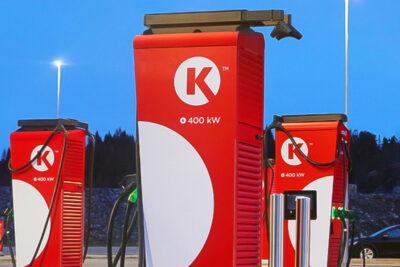“Own Today & Shape Tomorrow – The Road to eMobility” – Tony Sandberg from Scania
Transport remains essential for society; however, it is also a major source of greenhouse gases. Scania acknowledges it is part of the problem, but also insists on being part of the solution.
“We don’t think it’s the right solution to stop transport. We need to find a way to do it sustainably — economically, socially, and of course for the climate,” said Tony Sandberg, Vice President Pilot Partner at Scania during electrive LIVE.
Electrification, he argued, will gain strength over time, driven by stricter climate policies, zero-emission zones, and taxation on diesel. At the same time, scaling up volumes and innovations in charging and energy management will lower costs. “At some point we will reach TCO parity — and for some applications, we are already there,” Sandberg noted.
From truck maker to solutions provider
The transition is reshaping Scania’s business model. The company is expanding from truck production into full-service solutions covering software, charging, and financing. “It’s no longer enough to offer a modular truck. We need to help customers with charging, energy management and all the new challenges that come with e-mobility,” Sandberg stressed.
Current battery-electric Scania trucks serve urban distribution and, since 2024, also regional haulage up to 60 tonnes. More demanding applications will follow over time. Each truck typically carries six battery packs weighing 3.6 tonnes in total. Scania designs and assembles both modules and packs in-house, while also developing its own battery management software to maximise safety and performance.
Originally supplied by Northvolt, Scania has since diversified its battery sourcing after the start-up’s bankruptcy. A new supplier will begin production this December, with more to follow as volumes grow. However, Sandberg did not specify who the new supplier will be.
Charging principles and customer cases
On charging, Scania backs the CCS2 standard today but will roll out megawatt charging later this year. The goal: “to fully charge the vehicle during the 45-minute lunch break that is mandatory for drivers,” Sandberg explained. Depot charging remains central, complemented by destination and public charging depending on application. Customers will be able to order trucks with both inlets if needed.
To support operators, Scania offers consultancy, hardware deployment, operations, and financing for depot infrastructure. For public charging, the company is part of the Milence joint venture with Volvo and Daimler, aiming for 1,700 high-power sites by 2027. Through its “Scania Charging Access” card, customers can also access truck-ready stations at negotiated prices.
Real-world use cases show the potential of electrification even in heavy applications. In Karlstad, Sweden, Scania trucks haul 94-tonne wood chip loads fully electric over 50–100-kilometre routes. Success factors include strong shipper demand, long-term contracts, and control of charging infrastructure — sometimes even through semi-public charging companies set up by operators themselves.
As Sandberg concluded: “It is possible to electrify very heavy applications already today. With the right vehicle, charging strategy and business model, operators can make the shift work.”





0 Comments